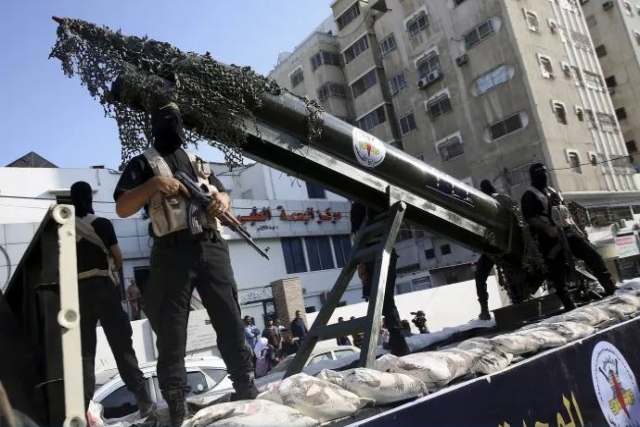New Details of Hamas' Rockets Emerge

New details have emerged of Hamas’ rockets which were fired at Israel since the latest confrontation began between the Middle East’s most formidable military and the Iran-supported militia group in Gaza.
As per The Jerusalem Post, the rockets used by Hamas is A-120 – developed from R-120 - which reportedly has a range of about 120km. Hamas has a huge inventory of shorter-range systems like the Qassam (up to 10km or 6 miles) and the Quds 101 (up to about 16km); bolstered by the Grad system (up to 55km); and the Sejil 55 (up to 55km). These probably make up the bulk of its inventory and for the shortest ranges can be bolstered by mortar fire. It also operates a variety of longer-range systems like the M-75 (up to 75km); the Fajr (up to 100km); the R-160 (up to 120km); and some M-302s which have a range of up to 200km.
Argentina based news outlet Zona-militar has detailed the specifications of some of the Hamas rockets.
None of the rocket artillery systems used by Hamas and the Palestinian Islamic Jihad (PIJ) have a guidance system that allows a precise attack on military installations. The only one that is equipped with an inertial navigation system is the Fajr-5 unveiled by Iran in 2017.

Qassem Rockets
The Qassem is nothing more than a rocket composed mainly of a metal tube filled with explosives. The first versions that came out in 2001 had a range of 5 km. One of its latest versions, Qassem 3, has an explosive warhead weighing approximately 20 kg, with a range of 16 km.
al-Quds 101 / Grad / BM21
The al-Quds rocket is only used by Palestinian forces. Like the previous one, it is homemade with a range of 16 kim. The more sophisticated versions, launched in 2008 against the city of Ashkelon, derive their design from the Russian / Soviet-made Grad and BM21 rockets.
Its 122m makeshift launchers are more complex than those used for launching the Qassem rockets, with a capacity to fire up to 10 rockets simultaneously. One of the latest versions, al-Quds 3, has a range between 18-30km.
M-75
Starting in the 2010s, Hamas began development of a series of new rockets with Iranian technical support. From this cooperation emerged the M-75 rocket, as a derivative version of the Fajr-5 rocket developed by Iran during the 1990s. Unlike the previous ones, its superior range, reaching up to 75km away, made it possible to attack the city of Tel Aviv, Israel's second most populous city.

The first 333mm Fajr-5 rockets began to be supplied in 2012, a fact confirmed by the then Chief of the Iranian Revolutionary Guard, with blueprints and parts being delivered to be assembled in clandestine workshops of Hamas and the Palestinian Islamic Jihad (PIJ). They are equipped with a 90 kg high explosive charge.
Its first employment against Israeli cities was in 2006 by the terrorist organization Hezbollah during the Lebanon War.
M-302
The M-302 is a Syrian-made 302mm rocket, based on the design of the Chinese WS-1 rockets. Within the Palestinian forces it is commonly designated as R-160, with a range that goes from 100-200 km.











